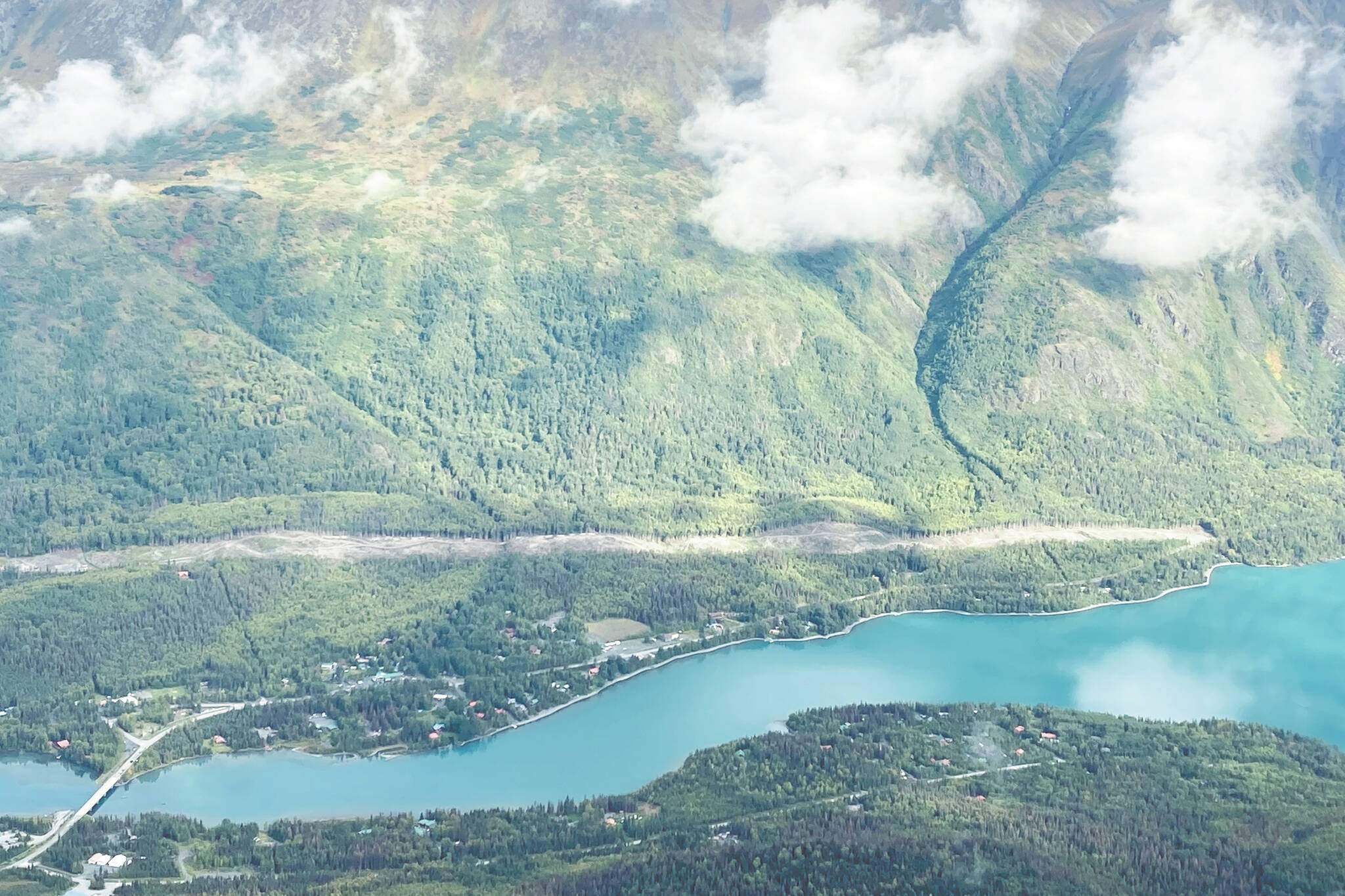A Kenai Peninsula environmental advocacy group partnered with the Alaska Department of Transportation and Public Facilities to conserve wetland habitat around the Sterling Highway Milepost 45-60 project by purchasing nearly 67 acres along the highway in April.
The organization — the Kachemak Heritage Land Trust out of Homer — strives to preserve fish and wildlife habitat, as well as recreational land, on the Kenai Peninsula for the future. According to the website, the Trust was founded in 1989 and has continued operations since then to help conserve land on the peninsula.
Lauren Rusin, the conservation projects manager at the Land Trust, said the organization does a variety of conservation projects within the lower Kenai River watershed system, and specifically focuses on the impacts of wetland habitats. After a parcel inspection, the Land Trust placed priority on the 66.6 acres of wetland near the Sterling Highway Milepost 45-60 project, which is also sometimes referred to as the Cooper Landing bypass project.
“We try to put our money where (it) can make the most impact,” Rusin said about the property.
According to a press release from the Land Trust, the newly purchased property contains 40.5 acres of flat wetlands, 5.9 acres of slope wetlands, and 3.7 acres of riverine wetlands, and is adjacent to 400 acres of Kenai Peninsula Borough land. The wetland habitat has been in possession of the Kachemak Heritage Land Trust since April 4.
The Sterling Highway Milepost 45-60 project entails constructing about 10 miles of new alignment in Cooper Landing, as well as reconstructing about 4 miles of the existing highway. The new roadway will cross at the Resurrection Pass National Recreation Trail and rejoin the existing highway at around Milepost 56, just about a mile northwest of Quartz Creek Road.
The project aims to increase safety for motorists and pedestrians, improve travel time through the area, and reduce noise, dust and traffic in Cooper Landing. Moving the new stretch of highway away from the river will likely also reduce the risk of fuel spills into the Kenai River, which meet current regulatory standards, according to the DOT.
Jonathan Tymick is the construction project manager at the DOT. He said in order to move forward with projects such as these, it’s necessary to assess the impact it will have on the surrounding area. For the Milepost 45-60 project, the largest DOT project in the state currently, a 40-year environmental impact statement was required.
“That environmental impact came with a ton of mitigation,” Tymick said.
That’s where the Kachemak Heritage Land Trust came in.
Tymick said the construction project has received authorization from the U.S. Army Corps of Engineers, dependent on obtaining mitigation — or credits — to compensate for unavoidable impacts to aquatic resources from construction. By the project’s completion date, the DOT must secure approximately 90 environmental credits — though that number may continue to change as the design of the project advances.
The Land Trust is contracted through the DOT to find parcels and provide the DOT project with all necessary environmental credits. Tymick said the partnership between the two entities looks a lot like an agreement between a home buyer and a realtor.
“We’ve gone a few different avenues, but the most promising was … through the Kachemak Land Trust,” Tymick said.
Tymick said the Trust has been doing a “great job” in gaining environmental credits needed by the Army Corps. As of Thursday, he said the Trust had already secured 45 credits.
Rusin, with the Trust, said the organization works with both agencies and private landowners to conserve vulnerable land on the Kenai Peninsula.
Private landowners have sold their properties to the Trust, she said, because they believe in protecting the environment. After surveying different land parcels, Rusin said, the organization will send letters with information about the Trust’s mission statement. She said they may send out 20 letters to property owners and hope for five to 10 responses.
But, she said, some people hear about the organization’s work through word-of-mouth.
“A lot of the time it’s folks who reach out to us,” Rusin said.
Carson Chambers, the communications and development manager at the Land Trust, said that by protecting land the organization is protecting livelihoods too — not just for animals, but also for people.
The fishing industry is one the Trust targets. Salmon have to swim to reproductive zones and throughout different watershed systems on the Kenai Peninsula in order to complete their life cycles and provide for anglers.
“We’ve been really focussing on the messaging that fish need land too,” Chambers said.
The Sterling Highway Milepost 45-60 project’s completion date is estimated for 2027.
Reach reporter Camille Botello at camille.botello@peninsulaclarion.com.


